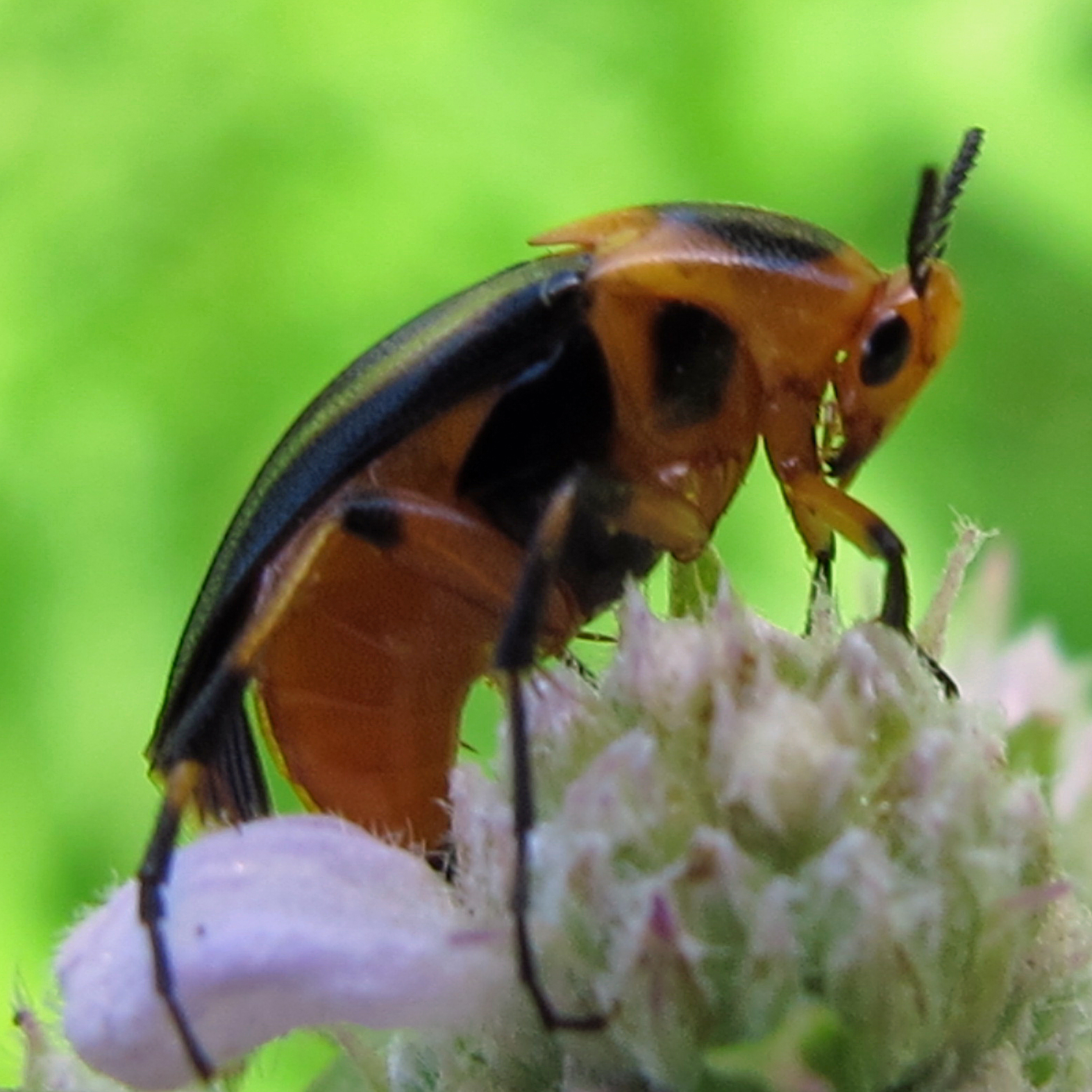Macrosiagon Limbata on:
[Wikipedia]
[Google]
[Amazon]
''Macrosiagon limbatum'' is a species of

wedge-shaped beetle
Ripiphoridae (formerly spelled Rhipiphoridae) is a cosmopolitan family of some 450 described species of beetles sometimes called "wedge-shaped beetles". Ripiphoridae are unusual among beetle families in that many species are hypermetamorphic pa ...
in the family Ripiphoridae
Ripiphoridae (formerly spelled Rhipiphoridae) is a cosmopolitan family of some 450 described species of beetles sometimes called "wedge-shaped beetles". Ripiphoridae are unusual among beetle families in that many species are hypermetamorphic pa ...
. They are found across the Eastern United States, Southeastern Canada and Central America. It is likely that their range extends into South America but this currently remains unknown.
Macrosiagon limbatum was first discovered in 1781 by the famous zoologist Johan Christian Fabricius
Johan Christian Fabricius (7 January 1745 – 3 March 1808) was a Danish zoologist, specialising in "Insecta", which at that time included all arthropods: insects, arachnids, crustaceans and others. He was a student of Carl Linnaeus, and is cons ...
. Coleopterans in the genus Macrosiagon are internal parasites of other insects at some point during their lifecycle. They go through a form of hypermetamorphosis
Hypermetamorphosis, or heteromorphosis,P.J. Gullan & P.S. Cranston. 2010. The Insects: An Outline of Entomology, 4th Edition. Wiley-Blackwell. is a term used in entomology that refers to a class of variants of holometabolism, that is to say, com ...
, in which the larva goes through multiple stages of morphologically distinct instars. The female deposits eggs on flowers visited by bees and other hymenoptera
Hymenoptera is a large order (biology), order of insects, comprising the sawfly, sawflies, wasps, bees, and ants. Over 150,000 living species of Hymenoptera have been described, in addition to over 2,000 extinct ones. Many of the species are Par ...
ns. Larva of Macrosiagon limbatum have been reported as parasites of the wasp family Crabronidae
The Crabronidae are a large paraphyletic group (nominally a family) of wasps, including nearly all of the species formerly comprising the now-defunct superfamily Sphecoidea. It collectively includes well over 200 genera, containing well over 9 ...
. The first larval instar is a planidum, an active larva that can climb on a host hymenopteran. They are then transported to the host's nest, where they act as parasitoids. The following instars don't have legs, and feed on larvae or stored pollen and nectar supplies.
Adult Macrosiagon limbatum are active in summer and can be found on flowers such as elderberries
''Sambucus'' is a genus of flowering plants in the family Adoxaceae. The various species are commonly called elder or elderberry. The genus was formerly placed in the honeysuckle family, Caprifoliaceae, but was reclassified as Adoxaceae due to ge ...
and goldenrod
Goldenrod is a common name for many species of flowering plants in the sunflower family, Asteraceae, commonly in reference to the genus ''Solidago''.
Several genera, such as ''Euthamia'', were formerly included in a broader concept of the genus ...
. They have prolonged mouthparts thought to be used for sucking nectar. Males have comblike antennae while female antennae are serrate. The elytra are longer than the abdomen and diverge at the apex.
Related Species
There are more than 150 described species in the genus Macrosiagon. They are distinguished from other Ripiphorids by the insertion of the antennae anterior to the eyes. Microsiagon limbatas are often confused with tumbling flower beetles (Mordellidae
The Mordellidae are a family of beetles commonly known as tumbling flower beetles for the typical irregular movements they make when escaping predators, or as pintail beetles due to their abdominal tip which aids them in performing these tumbling ...
) but differ in length of elytra. They are also similar in appearance to false darkling beetles (Melandryidae).
Collecting Notes
Beetles in the Ripiphoridae family are often difficult to collect. They have very short flight periods and can move swiftly. Marcosiagon limbatum prefer open fields with wildflowers. Sweep-netting on flowers and low vegetation during summer months is the best method for capturing these beetles. Catching adults by hand is difficult.
References
Further reading
* *External links
* Ripiphoridae Articles created by Qbugbot Beetles described in 1792 {{Tenebrionoidea-stub